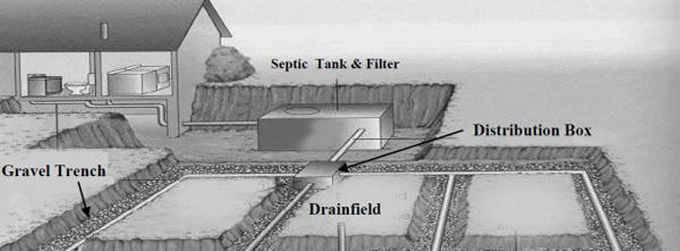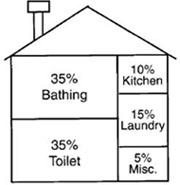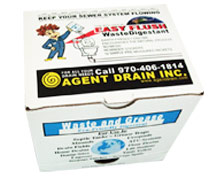We know it’s hard to know everything when purchasing a mountain home. We hope this area helps new home owners along with everybody that might be new to the concept of a mountain home. We live in a very harsh environment that can consist of a good 9 months winter. We are slowly building this area so if you don’t see your question answered here please contact us and we would be happy help you figure out what your system needs.
[DDET WHY AGENT DRAIN?]
Availability: We are always open for business – 24 hours a day, 7 days a week, 365 days per year! The sewer technician on duty will answer and help you with your drain problem. Same day service is to be expected!
Convenience: We can come as soon as possible or you may also schedule an appointment for the time that works for you. As a convenience to our customers, we accept Visa, MasterCard, and Discover as a payment option. Of course personal checks and cash are gladly accepted as well.
Experience: We work with residential and commercial businesses for emergency sewer problems. Agent Drain is dedicated to finding and curing the problem.
Equipment: Our specialized drain tools are the best available. Whether it’s root intrusions, grease, sand, or frozen lines Agent Drain’s quiver of tools can get any sewer jam up and running again in no time!
Bottom Line: Agent Drain will always give an upfront estimate on how much a certain drain will cost over the phone. We do not have any hidden fees like trip charges, chain up charges, mileage, etc. We have the most competitive pricing in the area. When a plunger just won’t do it… Call Agent Drain
[/DDET]
[DDET WHAT’S THE DIFFERENCE BETWEEN A DRAIN SPECIALIST VS. A PLUMBER?]
Cost: A drain specialist can quickly diagnose the problem and use the appropriate tools to get the job done right – the first time! A plumber specializes in installing and repairing pipes – not clearing them. Often they don’t have the experience or set of tools to properly do the job. And, of course, they will certainly charge you plumber rates!
Experience: A drain cleaner does just that – clean drains! That means every day at work involves figuring out why the drain isn’t draining and how to get it to flow again. This brings about direct sewer and drain experience. A plumber may know how to install your heating system, but how well does he understand the nature of your clogged mainline? When your faucet drips, call a plumber. When your drain is backed-up, call a sewer drain specialist. Better yet, call Agent Drain!
Conflict of interest: We believe there can be more than one option in problem sewers. We will gladly take the time to educate you on sewer systems and discuss with you the options for solving your drain problem. Some companies that also do plumbing may offer to dig up your problem sewer pipe and “fix” it. But are they looking at that $10,000 plus sale or your best interest? We do not install sewer systems. We will identify any problems you may have with your system and present all options so the customer can make an educated decision.
Specialized equipment: There are many modern tools for drain cleaning. A plumber can only fit so much in the van and many of the important drain clearing tools get left out. Agent Drain’s vans are full of nothing but tools to unclog a drain. From various sized snake cables with customized auger bits and blades, high-pressure hydro jetting machines to cameras and locators. We can take care of all of your clogged drain needs.
[/DDET]
[DDET WHAT DO I NEED TO GET MY MOUNTAIN HOME READY FOR WINTER?]
1. Know your system. If you are a new home owner and didn’t get a video camera inspection at the time of sale we recommend you get a video inspection done before the first snow fall. A video inspection can locate your septic tank and let you know if it might require maintenance due to low spots in the line or buildup. You can also see if your house has an as-built drawing registered with the county. Park County or Summit County
2. Know where your septic tank is. If you don’t, get it located during the summer months.
3. Upon location of the septic tank, install risers to insure access at all times without having to dig. Risers also help to create a windproof seal as drafts are a very common culprit of frozen septic tanks. If your tank happens to freeze in the winter, you could easily inspect the tank and install tank heaters if needed.
[/DDET]
[DDET HOW YOUR DOES A SEPTIC TANK WORK?]
There are many types of systems. The most commonly installed are: Conventional System, Mound System, Aeration Unit (ATU), and a Cesspool. A septic system is an on-site sewage treatment and disposal system buried underground. With the exception of the cesspool all of these units consist of a pretreatment septic tank and a soil absorption area referred to as a drainfield. (See picture below) The cesspool acts as one and both. For purpose of discussion here we will treat them all as being the same. The modern septic tank is a water-tight box usually made of reinforced precast concrete or reinforced fiberglass, through which no natural bacteria is able to enter. This structure is where organic solids are decomposed by natural bio activity. The purpose of your tank is to treat household wastes including body wastes, laundry water, bath water and discarded food. Septic systems are designed to work indefinitely if they are properly installed and maintained. It is critical to have your tank pumped out regularly and to maintain proper levels of bio activity.
A Conventional Septic System


HOW YOUR SEPTIC TANKS WORKS
Waste enters the tank from toilets, sinks, tubs, and drains. Organic solid material floats to the top of the tank forming a layer commonly called “scum”. Inorganic materials and the bi-products from enzyme and bacteria digestion settle to the bottom of the tank forming a layer called “sludge”. Bio activity continues within the scum layer and the sludge layer to break down the many organic materials present.
 The proper amounts of Agent Drain’s Waste Digestant added to the tank regularly will convert these solid materials to liquid, which then flow through your underground pipes to the drainfield. In the drainfield the bio activity will continue to help reduce glazing and improve soil absorption.
The proper amounts of Agent Drain’s Waste Digestant added to the tank regularly will convert these solid materials to liquid, which then flow through your underground pipes to the drainfield. In the drainfield the bio activity will continue to help reduce glazing and improve soil absorption.
WHY YOU NEED TO PUMP YOUR SEPTIC TANK
Pollutants from a poorly functioning system can be drawn into your well and come out in your drinking, cooking and bathing water. If your tank and filter are not cleaned regularly, sludge and scum will clog the drainfield and cause the whole system to fail. It is very important to remove the solid material before it reaches the level of the discharge outlet and flows into the drainfield. There is a certain amount of material that is not biodegradable and must be removed by pumping. It is very important to clean your filter, so your system will not back up and cause a potential health risk.
WHY YOU SHOULD MAINTAIN YOUR SEPTIC SYSTEM
A failing septic system isn’t like your car when it is low on oil; NO RED LIGHT will go on to warn you. In fact the U.S. Department of Health, Education and Welfare Public Health Service states: A septic tank system will serve a home satisfactorily only if it is properly designed, installed and adequately maintained. Even a good system which does not have proper care and attention may become a nuisance and a major expense.
[/DDET]
[DDET HOW DO I KEEP MY SEPTIC SYSTEM HEALTHY?]
Household Practices
Keep solids, toxics, oils and grease out of the drain
- Fats, oils, grease
- Harsh chemicals or cleaners, liquid drain de-cloggers, paint thinner, excessive bleach
- Exceeding the label’s recommended amount of detergent
- Bath oils, excessive soaps
- Old Medications
- Kitchen scraps, coffee grinds, avoid garbage disposal use
- Floss, hair, feminine products, condoms, kitty litter
- Baby wipes, tissue, paper towels, excessive toilet paper
Reduce and control your water usage
- Space loads of laundry throughout the week
- Fix leaking sinks and toilets (this can also help you to not freeze in the winter)
- Use high-efficiency washers, low-flow toilets and shower heads if possible
The Septic Tank
- Learn your system type and maintenance schedule
- Have your system camera’d if you
- Have your tank inspected at least every three years. Some systems require more frequent inspection
- Have your system pumped approximately every three years based on your inspector’s recommendation
- Clean outlet screen yearly (if your tank has one)
- Keep inspection and maintenance records
- Add only natural environmentally friendly additives to “boost function”
Don’t Forget The Drainfield
- Protect your drain field/leech field and reserve areas
- Regularly inspect your drain field
- Don’t drain hot tubs into septic tank or onto the drainfield
- No structures, parking, livestock, roof drainage, runoff
- Keep irrigation and sprinkler systems away from drainfield
- Plant only grass or shallowrooted plants
- Call your Health District for a map of your drainfield
- Check for odors, wet spots, or surfacing sewage
- If your drainfield has monitoring ports, check them every few weeks; ports that continually contain over six inches of water could indicate a problem
[/DDET]
[DDET HOW OFTEN DO I NEED TO PUMP MY SEPTIC TANK?]
There are many variables that determine when your septic tank needs pumping. As a rule of thumb pump your septic tank if the sludge and scum layer is 50% or more of the liquid level of the tank, generally every 3-5 years under normal use. The frequency of pumping out your septic tank can vary depending on the number of people in the household, size and type of septic tank, garbage disposal usage, amount and type of cleaning products and detergent being used, and whether bacteria and enzyme additives are being used.
[/DDET]
[DDET HOW DO I FIND MY SEPTIC TANK?]
If the lids cannot be seen or located with light probing in the likely area, contact the local county Environmental Health Department to obtain a Septic As-built. If there is a drawing on record, review the location(s) of the lids (if shown on the tank in the drawing) and dig them up. If no drawing is on record, call Agent Drain Inc. for a locate. We can use a radio transmitter that is flushed down a toilet or a cleanout and into the tank. The signal is then received with a locator.
[/DDET]
[DDET HOW OFTEN SHOULD THE MAIN SEWER LINE BE CLEANED?]
Does a houseful of guests suddenly give your main sewer line too much to do? If so, you’re not alone. Many of the sewer lines are simply not big enough to handle all the sewage from showers, toilets, washing machines, and sinks. Your main sewer lines may be old or outdated or it could even be due to the mineral content in the water.
The best answer is that your sewer pipes should be cleaned out periodically. This type of preventive maintenance can replace expensive repair costs later. While it is not always a guarantee that you will not need some sort of sewer cleaning in the future, it could help. However, if you find your shower, toilet or sink is repeatedly backing up, especially after a day of heavy usage, it’s time to call the professionals.
A good rule of thumb is to make sure your main sewer line is cleaned at least once every 18 months to two years. If you do not want to pay for such a service, you may find that video sewer pipe inspection will help detect any problems with blockage or broken pipes. In many cases, tree roots may have entered the sewer pipes and are causing the problems.[/DDET]
[DDET HOW IS THE MAIN SEWER LINE CLEANED?]
There are a number of different ways that a sewer pipe can be cleaned. A hydrojet uses a powerful stream of high pressure water to blast through any obstruction in the sewer lines. This is a very effective means of sewer clean-out.
Another method is from “snaking.” This involves the use of a metal devise down through your sewer pipe to break up any blockage. This sewer machine is one of the most common methods uses to clean clogged drains, as well.
[/DDET]
[DDET HOW DO TREE ROOTS GET IN THE MAIN SEWER PIPE?]
It only takes a very small opening, such as a hairline crack in a clay sewer pipe for the tree roots to get inside. Clay sewer pipes can quickly become overwhelmed by these sewer roots and if it’s not taken care of, the roots will continue to grow and cause problems. Getting rid of the tree roots early is important; otherwise, you may find that clay pipes will crack further and possibly break. Most of the snaking devices are able to take care of a sewer root problem.
While everyone’s sewer pipes may require cleaning at different intervals, don’t wait until there is a problem. By having the main sewer line cleaned at regular intervals, you may be able to prevent expensive repairs and service later on.
Let Agent Drain Inc address any problem you may have with your main sewer line. Our professional sewer cleaners can get your main sewer line cleaned safely and effectively.
[/DDET]

